Ekipa.co – So you’re an agile missionary and you want your company to taste the sweet paradise of agile-topia. To know agile transformation, you’ve read the agile books, attended training and conferences, and even paid a visit to your local agile shop. On the other hand, you’ve never felt so ready in your life.
Now it’s time to present your ideas to your company and you booked a meeting slot with the bosses. What could go wrong, right?
You start the meeting only to be greeted by an endless stream of comments and concerns between the participants that distract everyone further from the idea. You finish the meeting with no real progress on the matter and you’re left wondering, “what happened in there?”Sounds familiar?
Read More: Best Credible Agile Scrum Master Certification This Year
Daftar Isi
ToggleAgile Transformation Steps
We totally get how you feel, so here are 6 great tips to help you introduce agile to your company:
1. Go with the Winners

While it may be tempting to invite every decision-maker and expert to the meeting, please don’t. At least not yet. Although they’re the ones calling the shots, let’s hold off first.
For now, look for winners.
Winners are people who’ve been known to push the company forward. Are they known for challenging old processes to make room for better ones? Have they ever championed positive changes to improve people’s wellbeing? If the answer is yes, put them on the invite list. Otherwise, save them for later.
Having a small number of people with the right attitude and mindset is way more productive than having a room full of decision-makers who will need extra effort to convince. Plus, fewer people means you’ll have more personalized interactions with everyone with fewer distractions.
Aim to have around 3 – 6 names on your list and you’re ready for the next step.
Read More: Agile Maturity Assessment Tool, Know your Maturity level for Free
2. Agile Transformation to Know Your Gold

Before your meeting, grab a piece of paper and write clear outcomes of the meeting. Steer clear from anything too complex or technical. There are tons of content online that explain low-level agile details and you can direct them to those materials later.
For now, keep it simple and make it a session where you share your favorite part about agile. Instead of just sharing what the books and articles tell you, also make sure to share your opinion. What attracts you the most about agile?
Genuine opinions are usually more well-received than plain quotes and numbers. If you have more HR people as an audience, try highlighting parts of agile that improve people’s wellbeing, which in turn will produce better work environments and products. The collaboration of agile is an illustration to measure success through team success, not individual success. If you have more business and technical people, share stories about how agile’s iterative nature makes it ideal to respond to market changes and ultimately deliver relevant products that bring value.
No matter what, you need to treat these planned outcomes as gold. They’re the things you want to achieve, and knowing what they look like beforehand gives you valuable direction.
Once you have these outcomes in mind, it’s time to step into the meeting.
Read More: 4 Brilliant Ways A Business Analyst Can Redefine Their Role in an Agile Environment
3. Walk Away with the Gold
Armed with your planned outcomes, now it’s time for the meeting. Keep in mind that most of your meeting participants probably haven’t heard of agile and naturally they would have many questions and comments.
While exploring different topics can be good, you need to filter out the noise. In a productive meeting where people actively participate, you’ll find your conversations getting pulled in many directions. Always keep an ear out for when this happens, and bring it back on track towards your planned outcome.
As a meeting facilitator, you have the power to keep the conversation on track by having a firm yet collaborative approach. This way you can be sure to walk away with your gold at the end of your meeting.
Read More: Does Agile Work for Non-Software Projects?
4. Agile Transformation Looks Seeing is Believing

It’s no secret that what we see plays a big part in our decision-making process, whether we realize it or not. We choose shampoos by their colors, cereals by their box designs, we judge a book by its cover.
It only makes sense that we also project our ideas visually to our audience. Coupled with the right narratives, the visuals we bring into meetings can greatly increase the chances of getting our message across.
If you plan to use presentation slides, stay away from dumping long-winded text onto the screen. This is normally where you lose people’s interest. Instead, use colored markers, caricatures, charts, smileys, and even animations or videos. You’d be surprised at how quickly people become more attentive once you do this.
Read More: Agile Entrepreneurship of Ekipa’s Founder
5. Analogies Will Get You Places

They say one good analogy is worth three hours of discussion. That means for that 1-hour meeting you only need to prepare a third of a full analogy.
That’s a lame joke but you get my point.
Analogies are so powerful that you should always use them to explain your ideas. With the overwhelming amount of buzzwords nowadays, it clearly pays to present your ideas using simple stories that everyone is familiar with and can relate to.
One of my go-to analogies would be elephants. Elephants are big and powerful, but they’re slow. The same thing applies to companies. The bigger they get, the slower they become in responding to threats/changes because of their size. Agile development on the premise that we know the only constant in life changes. So we plan and deliver products in smaller chunks, iteratively. This way we can deliver products that are relevant to current situations, faster.
You can only get your message across when people understand you. So be prepared to throw a few good analogies in your meeting. The simpler the better.
Read More: 7 Reasons Why You Should Do Ekipa’s Scrum Master Certification Course
6. Call in for Backup

This goes without saying, but calling outside experts to introduce ideas to your company can bring a huge impact. Aside from having relevant knowledge on the subject, your company can gain valuable insights into agile practices in the industry and see how they could fit your company.
Good agile expert loves to share their knowledge. They know building an agile culture takes time and consistency, so they’d be more than happy to work with you to come up with a suitable plan to help your company go agile. So ask around and talk to an expert or two, and you’ll see what I mean.
Understandably, you still have more to do before your company goes agile. These tips were designed to help you with your first steps in introducing your internal team to agile. You can choose to apply individual tips or a combination/of all of them. Either way, they should help you make way for better discussions in the future with key players in your company. Don’t be happy to do agile transformation steps.
Read More: Best Agile Training Coaching Program in Indonesia



